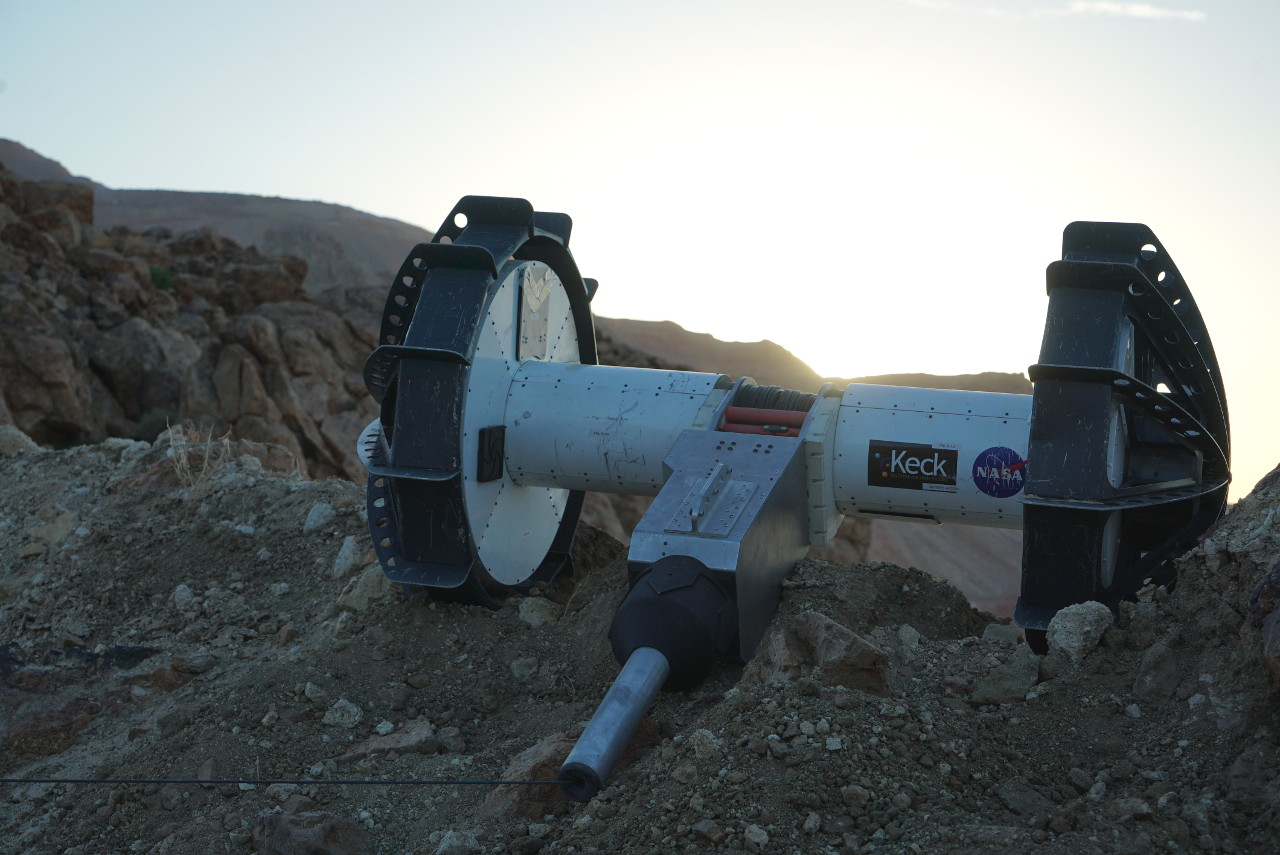ESP @ IROS 2020 — Award Nominated Collaboration with NASA JPL
Share
Marlin's paper at IROS 2020 with the NASA JPL Robotic Surface Mobility Group on tethered-rover autonomy was a finalist for the Best Paper Award on Safety, Security, and Rescue Robotics. You can check out this great article on the mission concept or download an open-access copy of the paper to learn more. Well done everyone!

- Publication
- Conference
- Proceedings of the IEEE/RSJ International Conference on Intelligent Robots and Systems (IROS)
- Pages
- 7034–7041
- Date
- Notes
- Best Safety, Security, and Rescue Robotics Paper Award Finalist
Abstract
Many areas of scientific interest in planetary exploration, such as lunar pits, icy-moon crevasses, and Martian craters, are inaccessible to current wheeled rovers. Rappelling rovers can safely traverse these steep surfaces, but require techniques to navigate their complex terrain. This dynamic navigation is inherently time-critical and communication constraints (e.g. delays and small communication windows) will require planetary systems to have some autonomy.
Autonomous navigation for Martian rovers is well studied on moderately sloped and locally planar surfaces, but these methods do not readily transfer to tethered systems in non-planar 3D environments. Rappelling rovers in these situations have additional challenges, including terrain-tether interaction and its effects on rover stability, path planning and control.
This paper presents novel traversability analysis and path planning algorithms for rappelling rovers operating on steep terrains that account for terrain-tether interaction and the unique stability and reachability constraints of a rapelling system. The system is evaluated with a series of simulations and an analogue mission. In simulation, the planner was shown to reliably find safe paths down a 55 degree slope when a stable tether-terrain configuration exists and never recommended an unsafe path when one did not. In a planetary analogue mission, elements of the system were used to autonomously navigate Axel, a JPL rappelling rover, down a 30 degree slope with 95% autonomy by distance travelled over 46 meters.